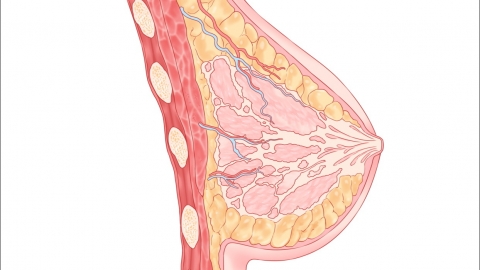How to Care for Breast Diseases
Under normal circumstances, breast diseases can be prevented and managed through maintaining a healthy diet, regular exercise, avoiding bad habits, self-examination, and scientific breastfeeding. Detailed explanations are as follows:

1. Maintain a healthy diet
Daily meals should primarily consist of low-fat, high-fiber foods, including vegetables, fruits, and whole grains. Dietary fiber and antioxidants help regulate hormone levels. Limit high-fat foods, sweets, and supplements containing estrogen to avoid excessive intake, which may cause fluctuations in estrogen levels and increase the risk of breast hyperplasia or tumors.
2. Regular exercise
Engage in at least 150 minutes of moderate-intensity exercise weekly, such as brisk walking, swimming, or yoga, to improve blood circulation, regulate endocrine function, and reduce the risk of breast diseases. Obesity should especially be avoided, as it can lead to excessive estrogen secretion, which stimulates breast tissue. Regular exercise combined with a balanced diet helps maintain a healthy weight, effectively reducing the burden on the breasts.
3. Avoid bad habits
Quit smoking and limit alcohol consumption, as smoking damages DNA in breast cells and alcohol affects hormone metabolism, increasing the risk of breast cancer. Wear well-fitting undergarments and avoid tight clothing that compresses the breast lymphatic vessels and affects lymph circulation. Reduce long-term mental stress by meditating or socializing; excessive stress can cause endocrine disorders and lead to breast hyperplasia.
4. Regular self-examination
Perform breast self-examinations monthly 7–10 days after the menstrual period ends, observing the appearance of the breasts and checking for lumps or tenderness. Seek medical attention promptly if any abnormalities are detected. Women over 40 should undergo breast ultrasound and mammography once a year, while high-risk individuals should follow medical advice to shorten the interval between checkups, enabling early detection and intervention.
5. Scientific breastfeeding
Women who are breastfeeding should continue to breastfeed and ensure the breasts are emptied after each feeding to prevent milk stasis and reduce the risk of mastitis. Maintain proper breastfeeding posture to avoid nipple damage, and promptly treat cracked nipples to reduce the risk of infection.
Most breast diseases, such as breast hyperplasia, are benign, but abnormal signs such as painless lumps or nipple discharge should be taken seriously. Scientific care and regular monitoring can significantly reduce the risk of breast diseases. If discomfort occurs, timely consultation at a breast specialty clinic is recommended to avoid delayed diagnosis and treatment.






